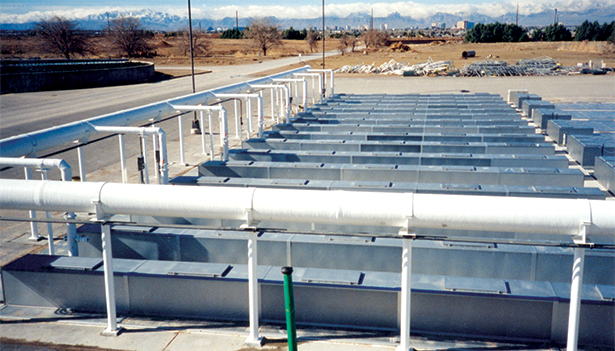Case Study: Plated Grating Used to Control Odor
 The Las Vegas Waste Water Treatment Plant odor control project included over $126,000 worth of plated grating. All of the open sewage channels in a new plant addition and modifications to the existing plant were covered with the plated grating.
The Las Vegas Waste Water Treatment Plant odor control project included over $126,000 worth of plated grating. All of the open sewage channels in a new plant addition and modifications to the existing plant were covered with the plated grating.
John Carollo engineers specified DURADEK® I-4000 grating with gritted plate for the corrosion resistance and low maintenance of fiberglass. The fiberglass reinforced polyester grating was bonded to SAFPLATE®, fiberglass gritted plate, to form structurally sound covers for the sewage channels. In addition to the corrosion resistance properties of fiberglass, the lightweight material makes it easy to lift and remove the covers whenever needed to take samples of the sewage. The anti-slip grit surface of the SAFPLATE® provides for worker safety.
| TECHNICAL DATA |
|---|
| Product: Odor Control Covers |
| Process: Pultrusion |
Materials:
|
Sizes:
|
| For: John Carollo Engineers |
| User: Las Vegas Waste Water Treatment Plant |
Much of the project involved modifications to the job site, so Strongwell assisted the contractor with taking actual field measurements. This support and product knowledge was very valuable to assure the DURADEK® grating was properly oriented so the bearing bars maintained the load.
In addition to the sewage channel covers, the odor control project included installing fiberglass platforms at the foul air scrubber tanks, and at the caustic and hypochlorite tanks. SAFRAIL™ fiberglass ladders and handrail were also used around these tanks. DURADEK® grating and grating hatches were used throughout the headworks and primary clarifier area.
The fiberglass covers are expected to withstand the corrosive fumes of this environment for an indefinite time.
View Printable PDF of this Case Study